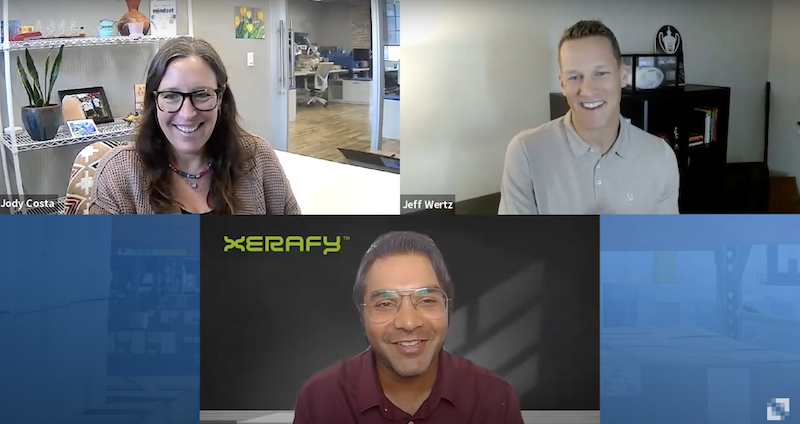Effective tracking of patient belongings is an important part of a well-designed loss prevention program, and hospital security departments have unique needs when it comes to keeping track of patient property. The right belongings tracking solution can improve your operations and support investigative functions while limiting liability from loss or damage and mitigating reputational damage to the organization.
With IntelliTrack® Patient Belongings Tracking (PBT), especially paired with Honeywell’s CT30 XP HC (CT30) mobile computer, you can create a consistent, quick, and accurate process to manage property while tracking the complete chain of custody for belongings throughout a patient’s hospital stay.
Security Officers, nursing staff and other end users can use PBT on an Android or iOS mobile phone or tablet to collect, store and return belongings, delivering an intuitive and familiar experience. A web-based console provides support for reporting, administrative tasks, and lost and found functionality.
Especially when paired with a rugged device designed for clinical environments like the CT30 mobile computer, PBT can be run along with your other essential applications. Users get a consumer smartphone experience, yet the device can withstand multiple 5-foot drops to concrete, and its disinfectant-ready housing is well suited to hospital environments. The connectors are specially designed so that it’s easy to clean with many commonly used disinfectant solutions without sacrificing durability. It’s versatile enough to go anywhere in the hospital from the nursing floor to the stockroom, to the security office. The device is slim and lightweight, easily fitting into a pocket and allows the user to have voice (including Push to Talk), text and video communications. The CT30 also has a longer lifespan than a consumer device and delivers three times greater ROI over consumer grade smartphones.
The collection process starts with scanning the patient’s wristband to get their Medical Record Number or other identifier used by the hospital. A second barcode (or “property tag”) is attached to a belongings bag or directly to a large item, such as a suitcase, and scanned. This associates the property with the patient. The security officer or nursing staff then inventories the property using the PBT application, captures photos if desired, obtains a patient signature and stores the property. A third barcode is scanned at the storage location where the property is placed. The return process similarly uses the same barcodes to identify where the property is stored, and tracks the property return activities.
You can use PBT to develop a complete chain of custody for patient belongings and valuables for all points of their hospital stay in the following ways:
- Maintaining property Inventory lists that start with an accounting of the initial collection, and updating inventory as additional property is collected or returned during the stay and at discharge.
- Tracking to whom and when custody of property is transferred.
- Providing patients with receipts for storage.
- Recording if the patient is unwilling or unable to participate in the collection or return process due to altered mental status or injury, and no family member or representative is present.
- Recording items belonging to patients transferred to another facility, or from another facility.
Using barcodes to accurately associate the property with a patient initiates the chain of custody for the patient’s belongings. From this point on, every interaction an employee has with the belongings is recorded, including where the property is located. This becomes important when you need to identify who took action on a patient’s property and when the event occurred, and when trying to quickly locate property to return to a patient. You can use your own naming convention on the barcodes for patients, property and locations and you can also print your own barcodes or procure pre-printed labels from Barcoding or your existing label supplier.
PBT also helps your resources become more efficient. Lengthy notetaking is needed less frequently since you can use your devices camera to capture photos. During property collection you can quickly capture photographs of items to document information such as condition, brand, and serial numbers. This information can later be used to address lost or damaged property claims. Additionally, you can also take photos of a property bag to make it easier to find property at a storage location.
Checklists of commonly collected items speed up the data entry process, too. The use of barcodes improves accuracy and tracking the location of stored items so that a user can scan a patient barcode at the bedside and see all locations that valuables and general property are stored, thereby eliminating the need to spend time looking for lost property.
The system is designed with the flexibility to support different workflows. For example, a Security Officer may collect valuables and directly deposit them in a safe while a Nursing Assistant collects belongings from multiple patients before taking them to a property storage room. One user may request property to be collected and returned by another user (e.g., a Nurse requests a Security Officer to return valuables to a patient at discharge). The nurse can scan or key in the patient ID within PBT, identify the property to be returned, and submit a return request. A Security Officer can then review the open requests and accept and fulfill one or more requests.
The Lost and Found feature allows a security department to enter and track data about found property and where it’s stored and enter and track lost property claims made to the security department. A user then can review the lost property and claim records, match the two and record the disposition of the property.
Security Officers can view all details of the property collected from the web console. By searching on the patient or property tag the user can see all actions taken on the property, by whom and when, along with the inventory of items, and if captured, photos, notes, and signatures. This helps immensely with claims investigations.
Other reports help you with your day-to-day property management activities. For example, the tag history report can be run to see all property movements and can be filtered by date, site, patient, person performing the activity and other attributes. The tag aging report shows you property that has been in your possession for over a certain number of days.
Overall IntelliTrack® Patient Belongings Tracking is designed with Security departments in mind to help your organization reduce lost property claims and mitigate the risk of lawsuits, help your teams become more efficient, and ultimately improve patient satisfaction.





.jpg)